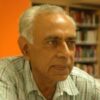Agricultural Seasons in India
TRANSCEND MEMBERS, 29 May 2023
Dr. Ravi P. Bhatia – TRANSCEND Media Service
In India there are basically two agriculture seasons — Kharif and Rabi. In the Kharif season there is a lot of rainfall especially in the southern states — Tamil Nadu, Kerala, Karnataka. This Kharif season is conducive to growth of rice; this is apparent from the habits of the people of this region where not only rice is eaten directly but also products made from rice — dosa, idly are easily available and preferred by the people of this region. These products of rice are generally very inexpensive as felt by not only local people but also visitors who come from other parts of the country.
On the other hand, the Rabi season does not have too much rainfall but has more of sunlight, which encourages growing of wheat and products like bajra, Jawar and makki. The growing of wheat and these other products generally referred to as millets are very important products in the northern states of Panjab, Haryana, Himachal and parts of Rajasthan. Wheat is a staple diet of the people of these states. It has acquired greater importance especially since a good part of the produce is exported to neighbouring countries of Pakistan, Afghanistan, Iran, to save on foreign exchange.
In Pakistan wheat has become a scarce commodity as is evident from the social media and people struggling to get and preserve wheat. Whereas Pakistan has serious economic problems, wheat has become a means of reducing economic difficulties and serves as an alternative currency in its relations with neighbouring countries. No wonder there are struggles — sometimes violent, to acquire and maintain sufficient stocks of wheat and also millets.
Many people in Pakistan are saying that they want to go to Hindustan (India) because food and other necessities are available there in plenty, but not in Pakistan. How has this situation developed? Partly politically and partly due to economic considerations. It is a political quagmire because it has developed due to the strength and initiative of Prime Minister Modi which even people of Pakistan realise in contrast to their own government and leaders.
Economically also, people realise that their own government does not have the strength to stand firm and face the economic challenges that their government faces like Mr Modi has faced. They feel that their government does not have the strength to face the various challenges partly because the military does not want to give a free hand to the government. This situation is becoming worse — political weakness of the government and military interference.
In contrast in India, the military does not interfere in the running of the government. There is a strong Indian military but that is meant for maintaining Indian sanctity on her borders with Pakistan, Bhutan, Nepal, and China. With this strong military no foreign power dare encroach upon Indian Territory as China had done in 1962 when they transgressed deep into Indian Territory.
Military and political strength are assets that India enjoys today in the complex world that we all face.
______________________________________________
 Dr Ravi P Bhatia is a member of the TRANSCEND Network for Peace Development Environment, an educationist, Gandhian scholar and peace researcher. Retired professor, Delhi University. His new book, A Garland of Ideas—Gandhian, Religious, Educational, Environmental was published recently in Delhi. ravipbhatia@gmail.com
Dr Ravi P Bhatia is a member of the TRANSCEND Network for Peace Development Environment, an educationist, Gandhian scholar and peace researcher. Retired professor, Delhi University. His new book, A Garland of Ideas—Gandhian, Religious, Educational, Environmental was published recently in Delhi. ravipbhatia@gmail.com
Tags: Agriculture, India, Seasons
This article originally appeared on Transcend Media Service (TMS) on 29 May 2023.
Anticopyright: Editorials and articles originated on TMS may be freely reprinted, disseminated, translated and used as background material, provided an acknowledgement and link to the source, TMS: Agricultural Seasons in India, is included. Thank you.
If you enjoyed this article, please donate to TMS to join the growing list of TMS Supporters.

This work is licensed under a CC BY-NC 4.0 License.